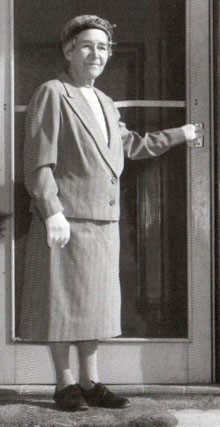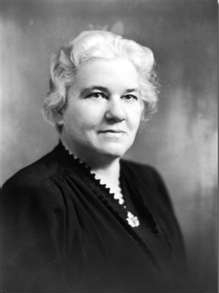The twenty-one slides below trace polio’s history from its earliest depiction on an ancient stele, through the recognition of the cause of the disease, the race against time to develop a vaccine in the face of an escalating number of epidemics, and the huge effort to rid the world of new polio infections, to a growing awareness of the late effects of the disease, to the establishment by polio survivors of peer support and advocacy groups, and finally to the current and ongoing struggle by Australia’s (and indeed the world’s) polio survivors to have their late-effects symptoms recognised and effectively managed through the provision of specific polio services.
The timeline can also be downloaded as a PDF file: Polio Timeline (File Size: 9.6 MB).
Dame Annie Jean Macnamara (later Connor), an Australian medical doctor and scientist, was best known for her contributions as a consultant and medical officer to the Poliomyelitis Committee of Victoria 1925-31. During the 1937-38 polio epidemic, she worked with Frank Macfarlane Burnet (who later won a Nobel Prize for medicine) to discover that there was more than one type of polio virus (British Journal of Experimental Pathology, 1931). Read more on the following webpages:
Polio Place

Dame Jean Macnamara in 1967
Elizabeth Kenny (1880-1952), nurse, was born on 20 September 1880 at Warialda, New South Wales, daughter of Michael Kenny, farmer from Ireland, and his native-born wife Mary, née Moore. She received limited education at small primary schools in New South Wales and Queensland. There is no official record of formal training or registration as a nurse. She probably learned by voluntary assistance at a small maternity hospital at Guyra, New South Wales. About 1910 Kenny was a self-appointed nurse, working from the family home at Nobby on the Darling Downs, riding on horseback to give her services, without pay, to any who called her. In 1911 she used hot cloth fomentations on the advice of Aeneas McDonnell, a Toowoomba surgeon, to treat symptomatically puzzling new cases, diagnosed by him telegraphically as infantile paralysis (poliomyelitis). The patients recovered. Kenny then opened a cottage hospital at Clifton. Read more on the following webpage:

Sister Elizabeth Kenny
Learn more about the history of polio in Australia on the following websites:
National Library of Australia
National Film and Sound Archive of Australia
National Museum of American History – Whatever Happened to Polio?

























